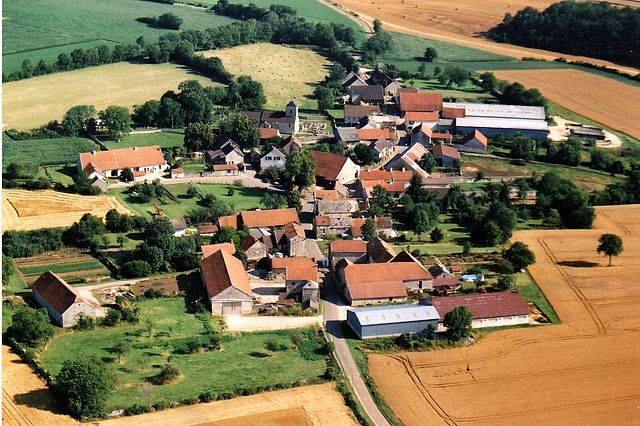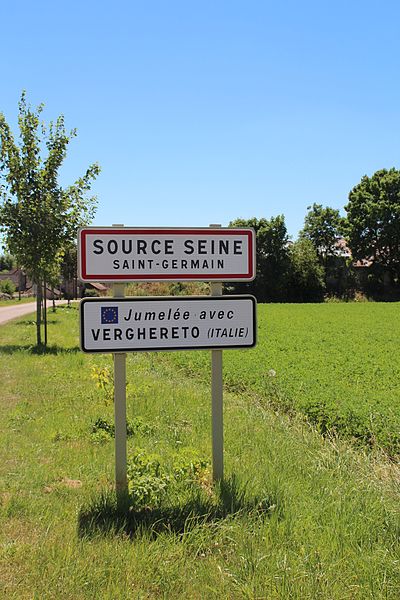Source-Seine, known as Source Seine during the first few months after its formation, is a commune in the Côte-d'Or department in eastern France.
An aerial view of Saint-Germain
A sign at the entrance to the town, displaying the incorrect name originally used
The nymph statue at the source of the Seine river, in the Sources de la Seine park
In Gallo-Roman religion, Sequana is the goddess of the river Seine, particularly the springs at the source of the Seine, and the Gaulish tribe the Sequani. The springs, called the Fontes Sequanae, are located in a valley in the Châtillon Plateau, to the north-west of Dijon in Burgundy, and it was here, in the 2nd or 1st century BCE, that a healing shrine was established. The sanctuary was later taken over by the Romans, who built two temples, a colonnaded precinct and other related structures centred on the spring and pool. Many dedications were made to Sequana at her temple, including a large pot inscribed with her name and filled with bronze and silver models of parts of human bodies to be cured by her. Wooden and stone images of limbs, internal organs, heads, and complete bodies were offered to her in the hope of a cure, as well as numerous coins and items of jewellery. Respiratory illnesses and eye diseases were common. Pilgrims were frequently depicted as carrying offerings to the goddess, including money, fruit, or a favourite pet dog or bird.

Image of Sequana in a duckboat




